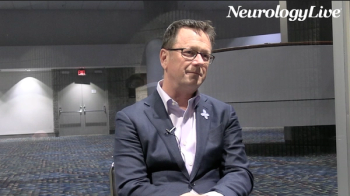
Early Intervention in Myasthenia Gravis
Panelists discuss how early treatment may protect the neuromuscular junction from permanent damage, prevent disease progression and crisis, and improve long-term outcomes. However, more data are needed from trials specifically studying patients with shorter disease duration rather than the typical average of 7 to 10 years.
Episodes in this series

Early treatment intervention in myasthenia gravis may provide significant advantages for long-term outcomes, though current treatment guidelines and limited clinical trial data create barriers to implementing this approach. Evidence suggests that patients treated within 2 years of disease onset achieve greater MG-ADL score improvements than those with longer disease duration, supporting the concept that earlier intervention may preserve neuromuscular junction function and prevent irreversible damage. The patient perspective strongly supports early aggressive treatment to minimize disability duration and achieve faster return to normal function.
Multiple sclerosis provides a compelling parallel for early intervention benefits, where prompt treatment prevents fixed brain lesions and long-term disability accumulation. In myasthenia gravis, protecting the neuromuscular junction from complement-mediated destruction and antibody-induced damage through early upstream and downstream targeting approaches may prevent permanent weakness development seen in some chronic cases. Data from rituximab trials suggest that patients with early-onset disease show better responses than those with established disease, potentially indicating different pathophysiological mechanisms in early vs late disease stages.
The challenge lies in the average disease duration of 7 to 10 years in most clinical trial populations, limiting evidence for early intervention strategies. Economic data highlighting unemployment rates exceeding 50% in some countries underscores the societal burden of delayed or inadequate treatment, supporting arguments for early, aggressive intervention. Future clinical trials specifically targeting patients within 1 to 2 years of symptom onset could provide crucial evidence for early treatment benefits and potentially reshape treatment guidelines to emphasize prompt initiation of targeted therapies rather than traditional stepwise approaches through conventional immunosuppression.
Newsletter
Keep your finger on the pulse of neurology—subscribe to NeurologyLive for expert interviews, new data, and breakthrough treatment updates.



































